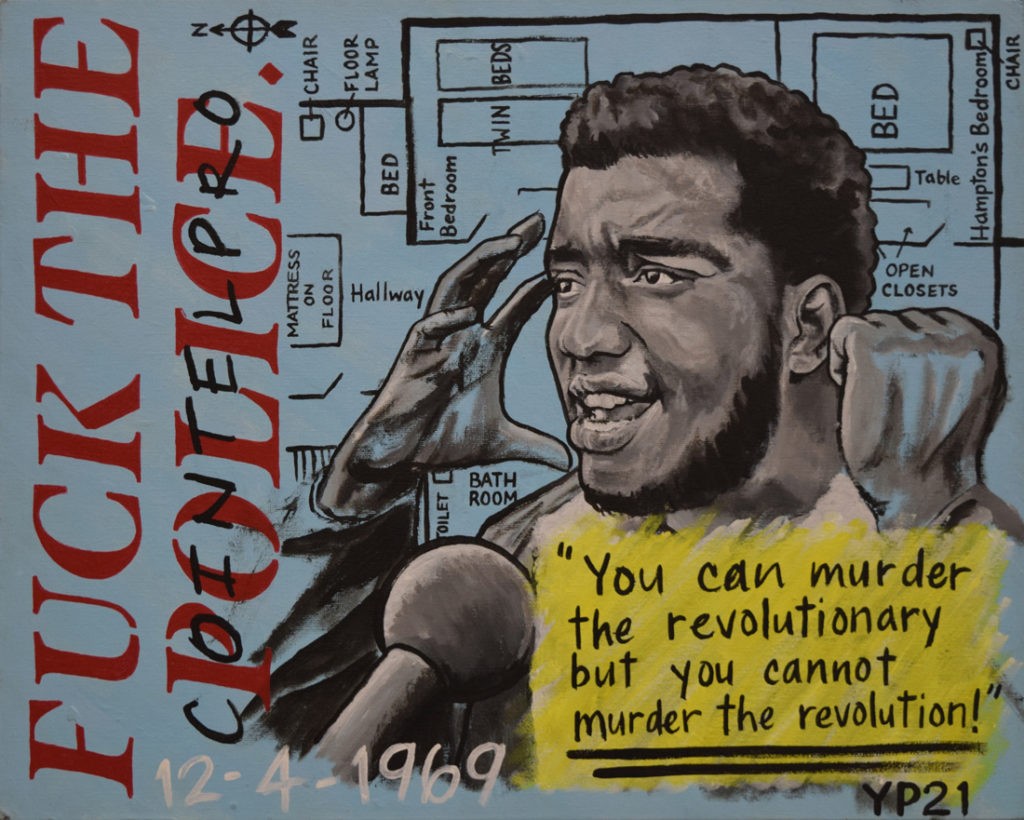
Yusef Pierce, Chairman Fred, 2021, acrylic on canvas panel.
Faculty-Driven Exhibition #1: Yusef Pierce, Curated by Associate Professor Barbara Junisbai
Artwork and Text: Yusef Pierce ’21, Organizational Studies major
Curated by: Barbara Junisbai, Associate Professor of Organizational Studies
Curator’s Statement
I was introduced to Yusef Pierce’s work in fall 2019, during our first Inside-Out class together. That particular day, students were working in small groups, peer reviewing one another’s draft papers describing “my college journey.” Yusef’s story revealed a series of experiences that he had in the classroom during his incarceration. The part I most vividly remember is Yusef’s description of his first art lesson, when it soon became apparent to everyone in the class that Yusef had a gift. No one could believe he had never studied art or practiced drawing; it all flowed so easily and naturally from him. He himself was surprised by what he was able to produce. To enhance his narrative, Yusef brought in three of his works to share. As the paintings made their way around the room, each and every one of us who was present that day was yet again reminded of the most powerful lesson that we took from our time together: “We are all much more than we are told. We are all much more beautiful.”* What a privilege it is to behold and revel in the experience, knowledge, power, and beauty that we all bring to our communal spaces—yet, how often do we build in time and trust for these to be appreciated?
*Eduardo Galeano, https://www.theguardian.com/books/2013/jul/23/eduardo-galeano-children-days-interview, and cited in Bettina L. Love, We Want to Do More than Survive (Beacon Press 2019).
– Barbara Junisbai, Professor of Organizational Studies
Rationale
This virtual exhibition of paintings by Yusef Pierce ’21, which displays works referenced as both “Black Art” and “Prison Art,” is situated within Pitzer College’s academic emphasis on social justice issues and intercultural understanding, and serves to significantly enhance the college’s learning goals and educational mission. The phenomenon of mass incarceration in the U.S. today is a major focus in the movement for social justice. Involvement in so-called “Prison Art” is an often overlooked, yet crucial means for better understanding the modern carceral experience. An exhibition of “Prison Art” has the unique ability to reach all members of the Pitzer community, including those of us not already involved in the Justice Education Initiative, with a powerful message: The people inside California’s prisons have something valuable to contribute.
One of the main ways for non-white and non-mainstream cultures to find appreciation and acceptance by the larger social consciousness is through the arts. Visual art, more specifically, has a way of arresting one’s attention and transcending cultural boundaries. Through the curation of this exhibition of works by one of the college’s students, our aim is to fulfill the Pitzer core value of intercultural understanding in a direct and personal way.
Exhibit
The exhibit consists of two distinct series of paintings. The first is a portrait series and the second comprises depictions of prison life. The portraits are of African Americans that range from highly recognizable international icons to much lesser known figures who were equally impactful in the enduring struggle for black liberation. Each portrait tells a unique story about the subject, with backgrounds filled with text and symbolism. The messaging is sometimes subtle or ambiguous and at other times so provocative that it is possibly offensive. Yet all of the pieces are dynamic and, of course, open to interpretation. They contain elements of contemporary realism, political suggestion, and historical hinting. And each work orients viewers to the perspectives and contributions of black figures not found in history or celebrated on television. It is unfortunate that most of the revolutionary minded freedom fighters that blazed the trail for today’s more recognizable movements are not widely known. In part, this series serves to introduce a broader audience to the names and stories of giants like George Jackson and Fred Hampton.
The remaining works, which function as depictions of prison life, recreate moments within the California prison system. Arguably a separate society exists within prisons, as a subculture that is largely unknown beyond prison confines. What better way is there to understand a culture than through a careful study of the art that it produces? Images of incarcerated people living, surviving, and thriving serves to humanize a population that is widely disparaged. Showcasing the culture in which incarcerated individuals live ultimately leads to much needed advocacy and awareness. In fact, an exhibition that displays renderings of prison life, created by a currently incarcerated person, is in itself an act of justice.
Artist Statement
I think it is important to note that I discovered my artistic talent while in prison. It is true that oppression often requires that individuals make themselves extraordinary in order to simply survive. I began creating art as a way to communicate with my children who, at the time, were too young to read and write. Now, visual art has become the primary way that I communicate who I am to the rest of the world. I believe that what I choose to paint is just as important as my ability or technique. My paintings are entire conversations on canvas. Every piece that I create is intended to make you think and feel more deeply.
– Yusef Pierce ’21
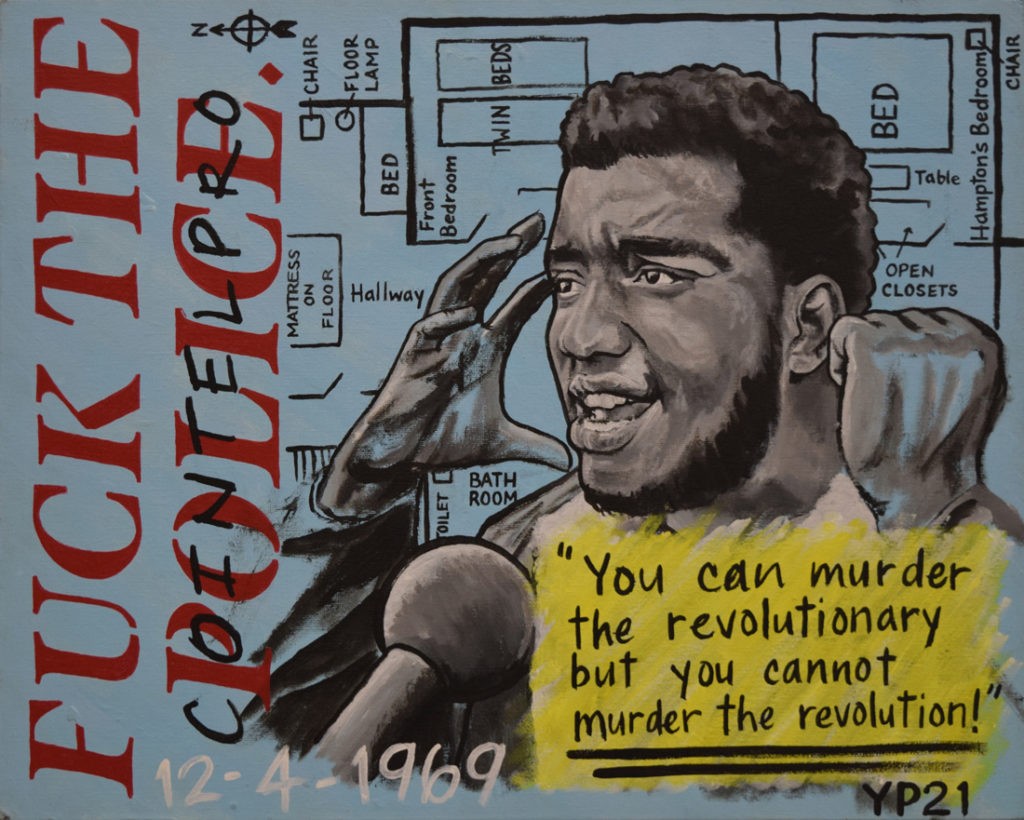
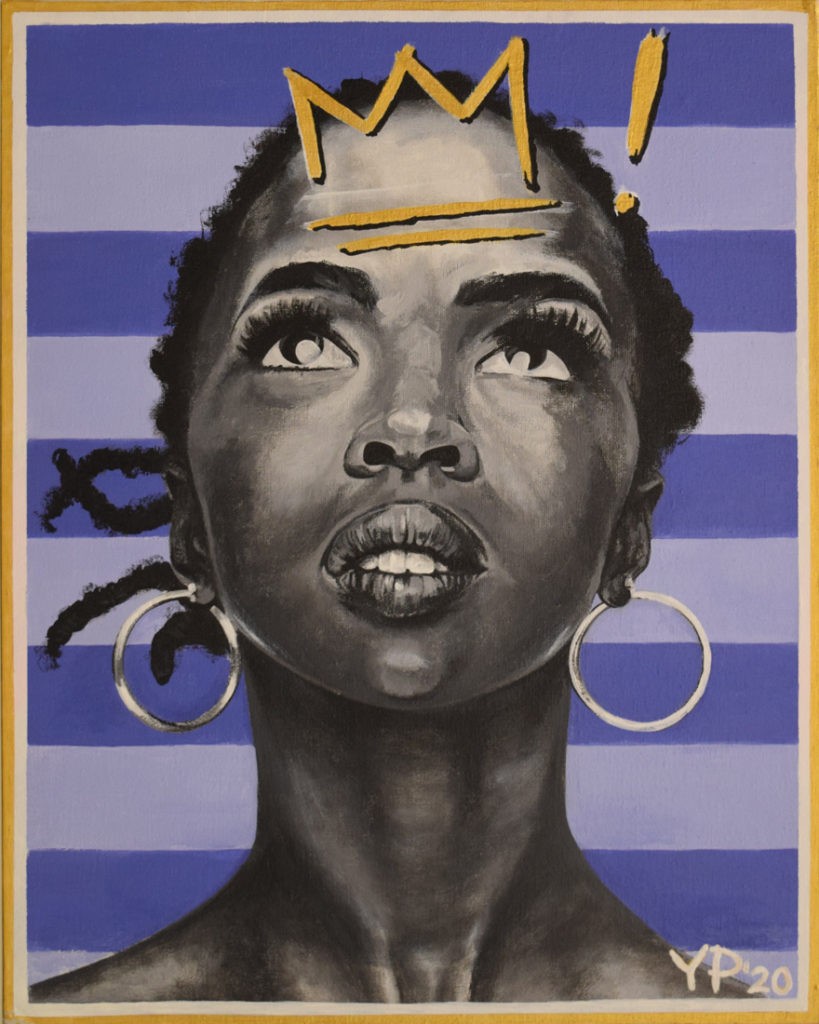
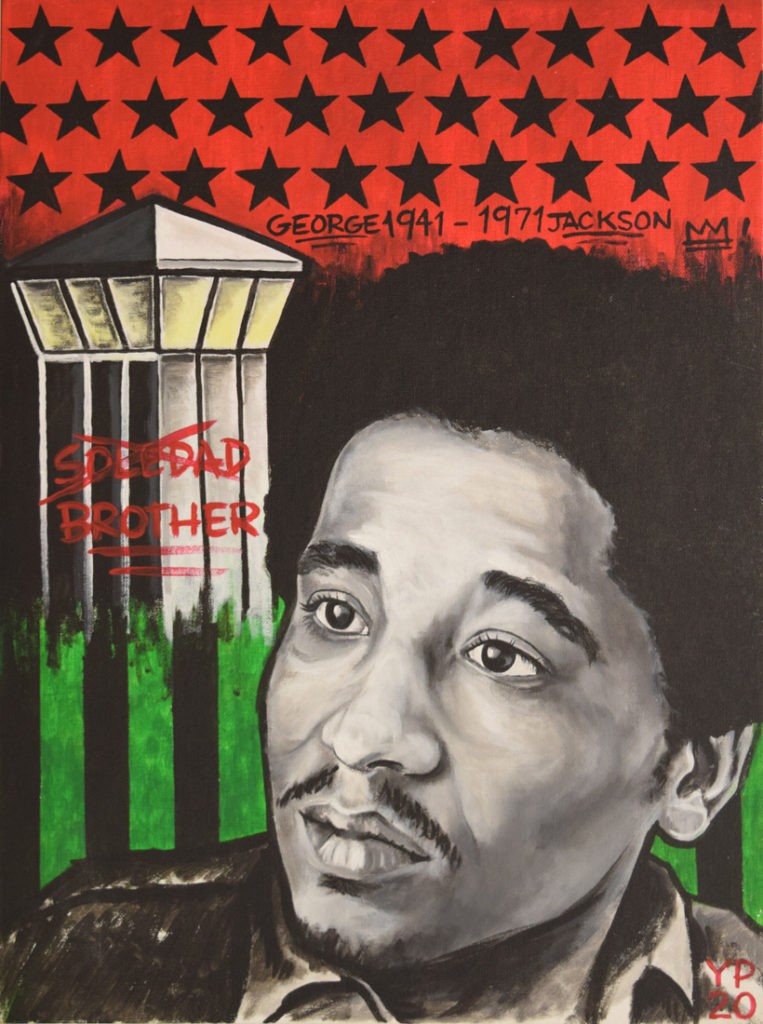
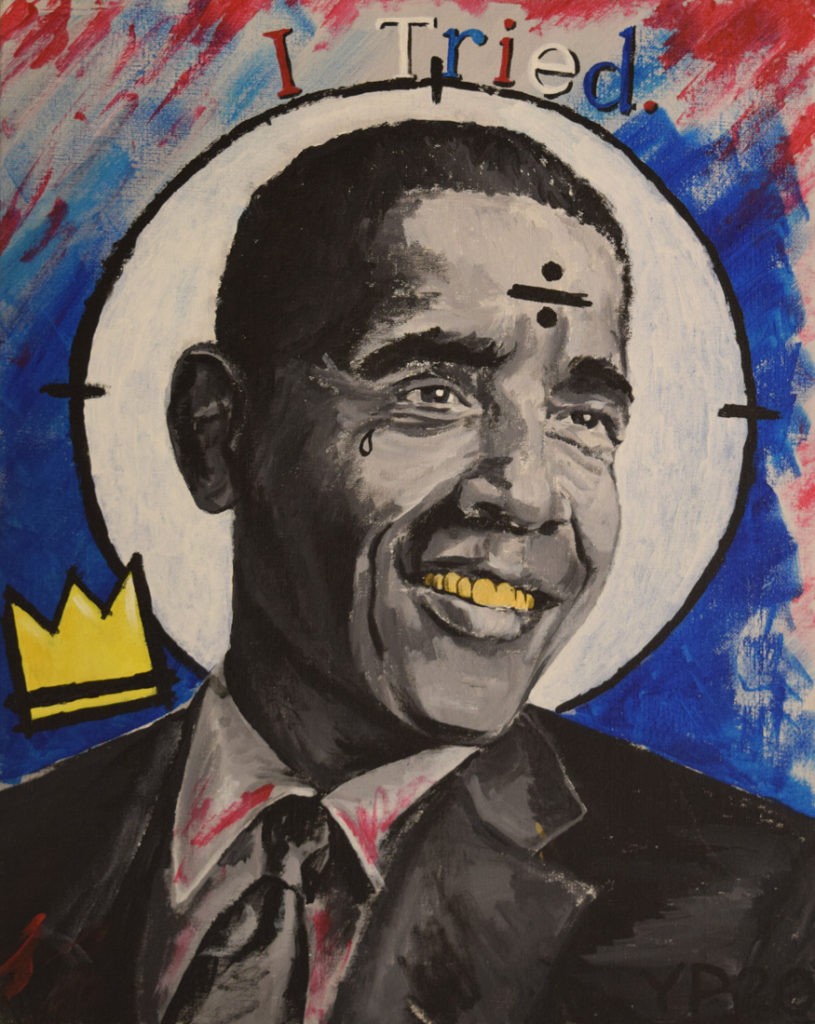
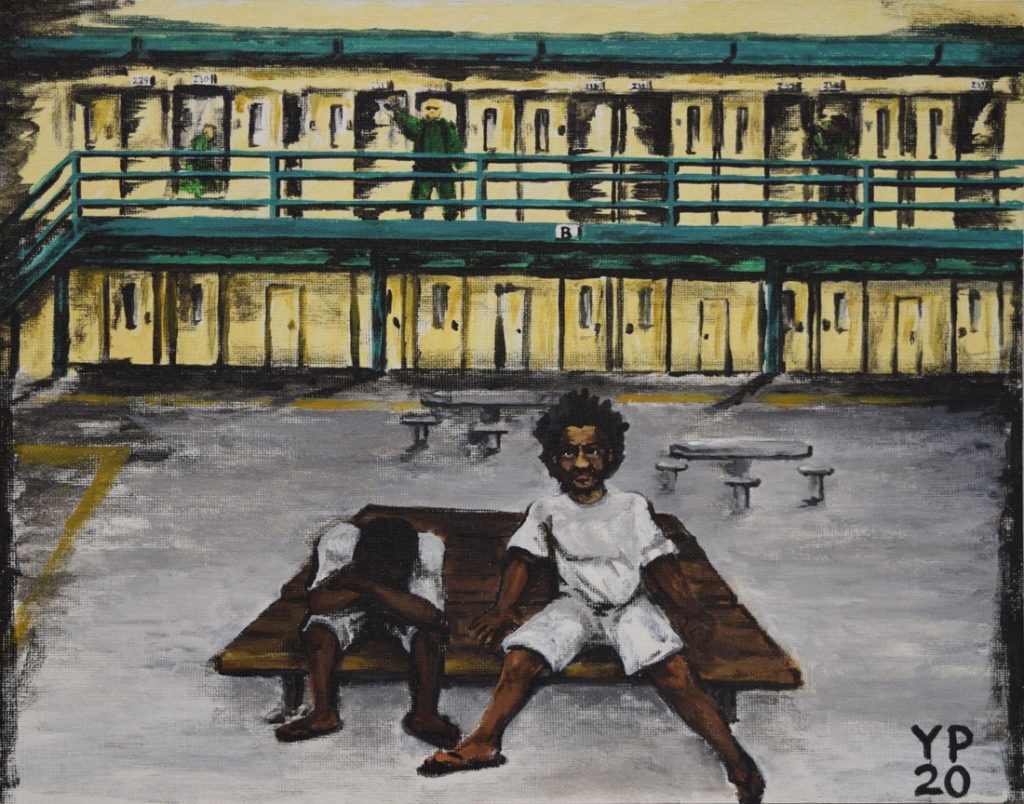
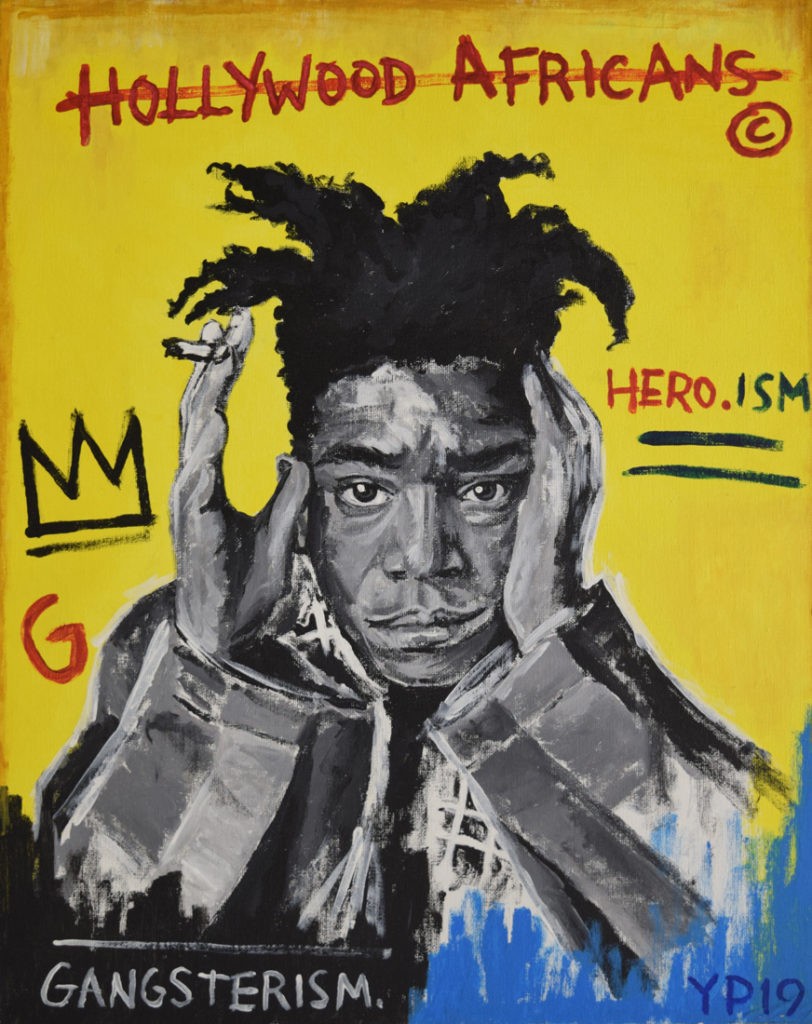
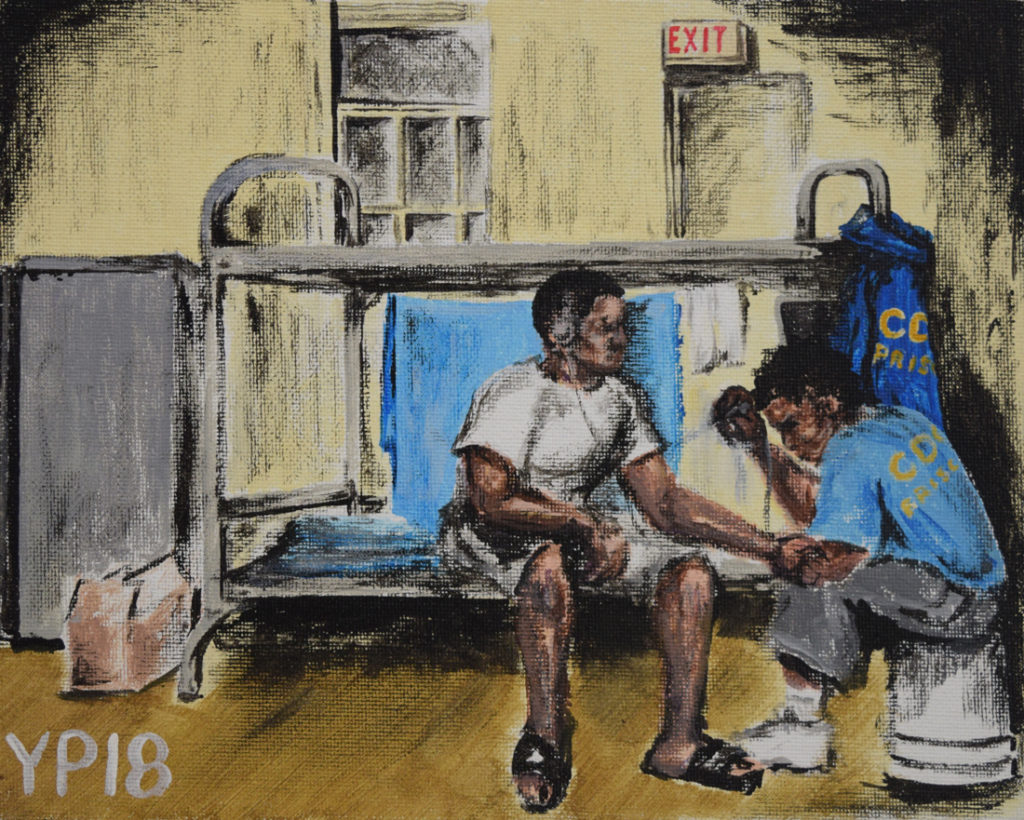
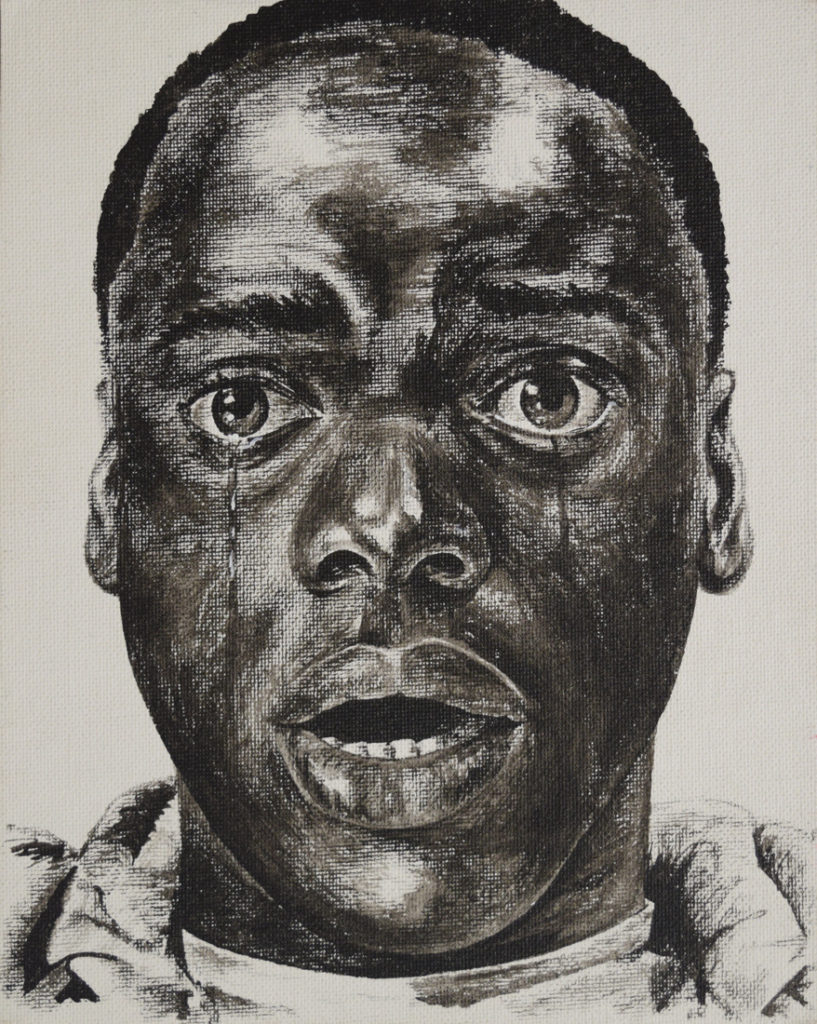
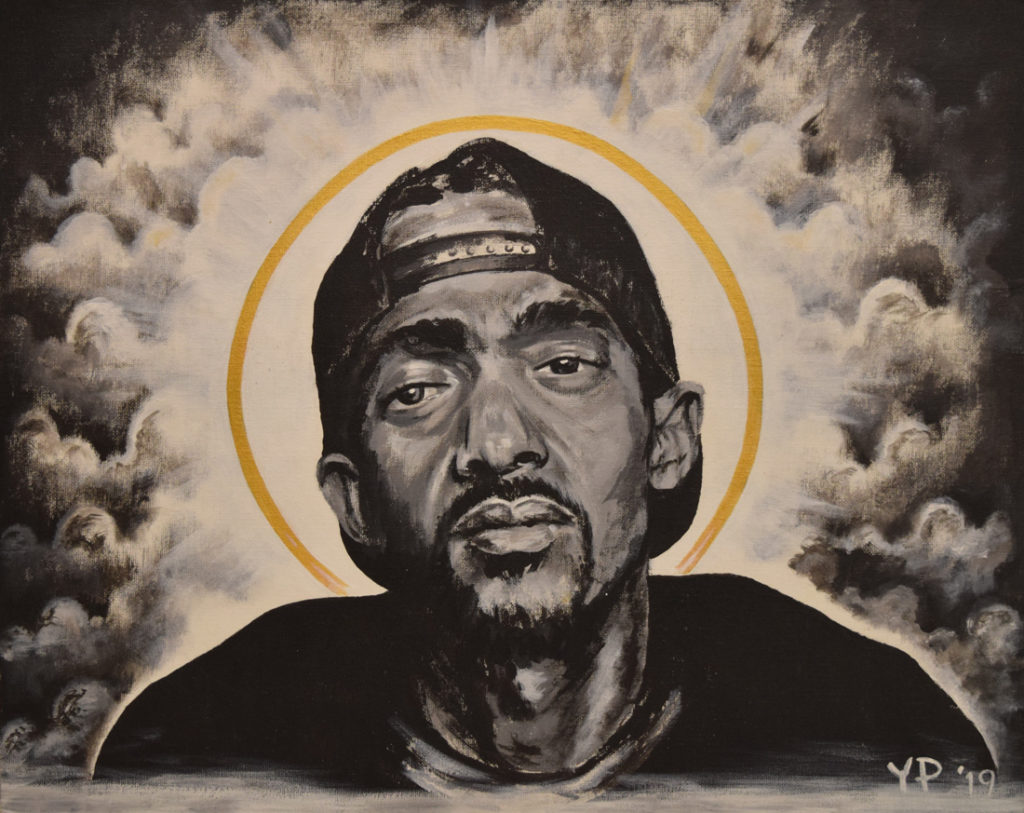
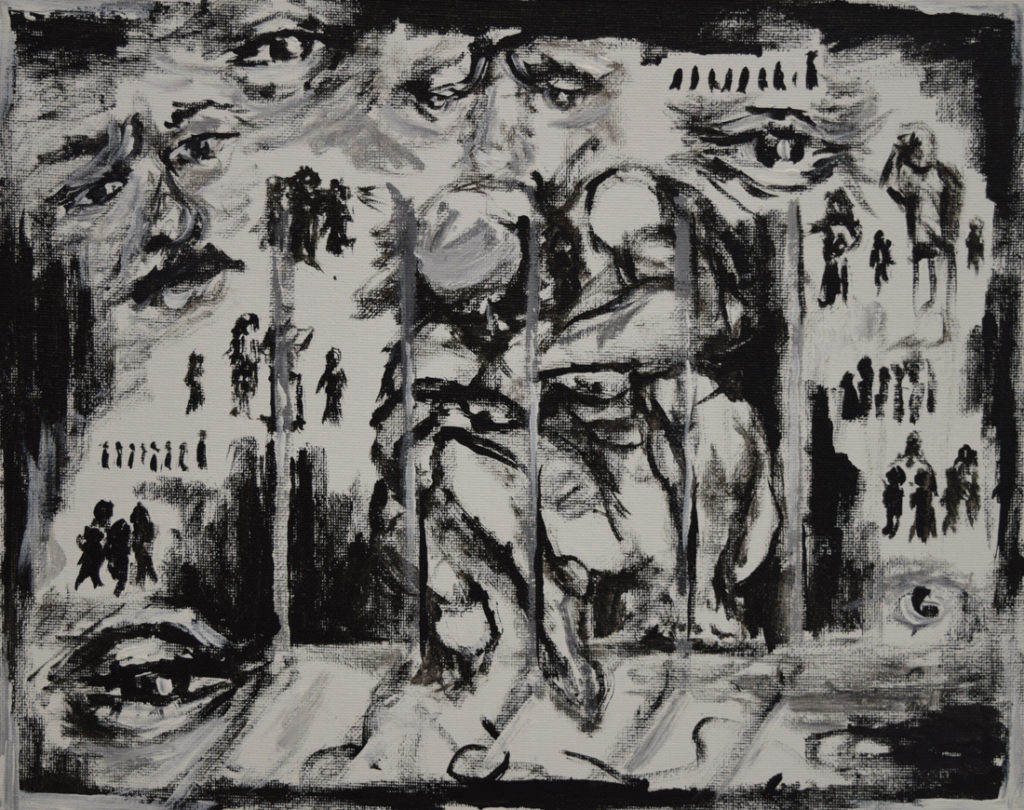
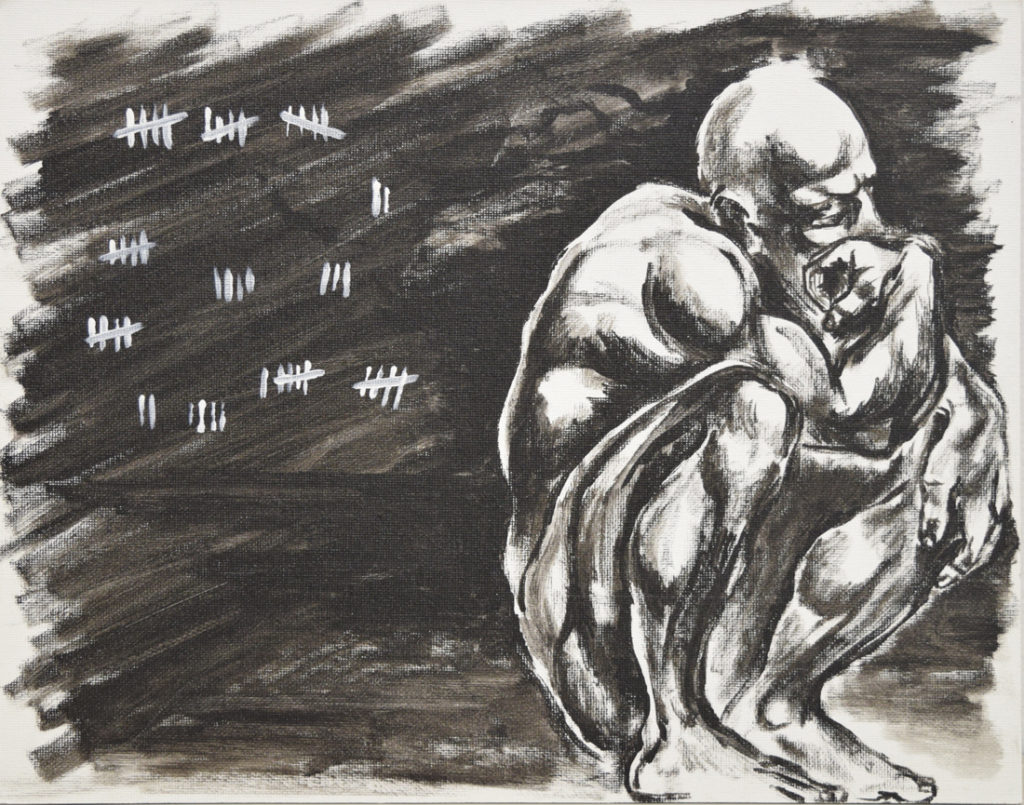
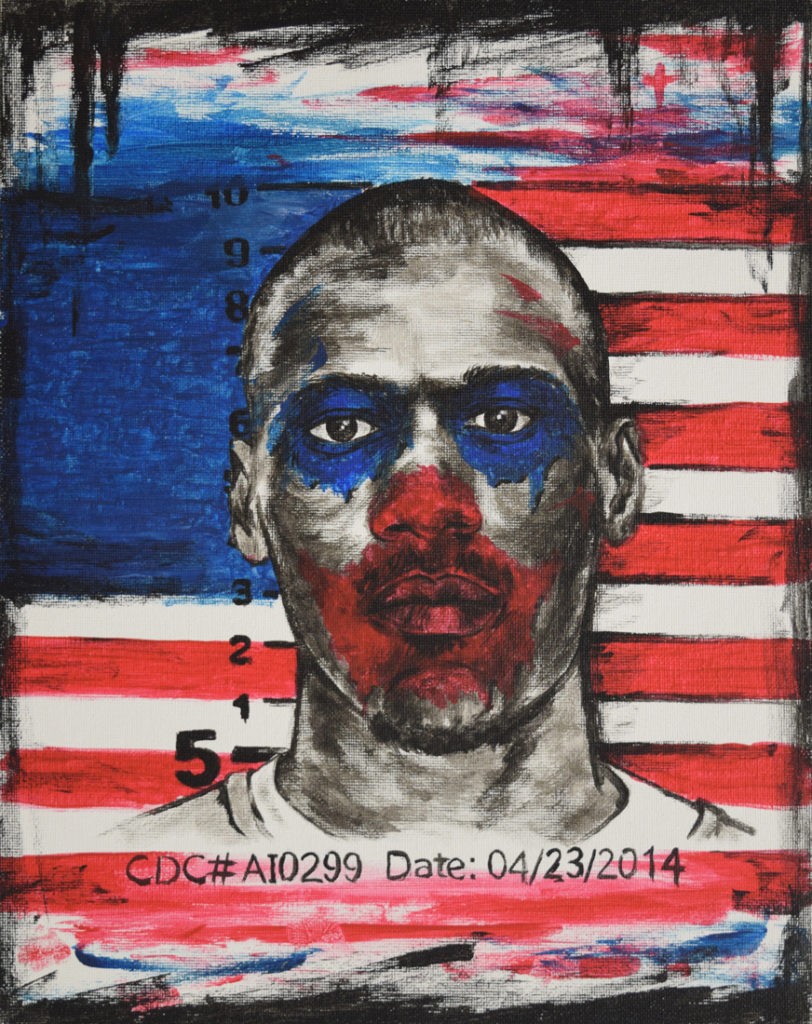
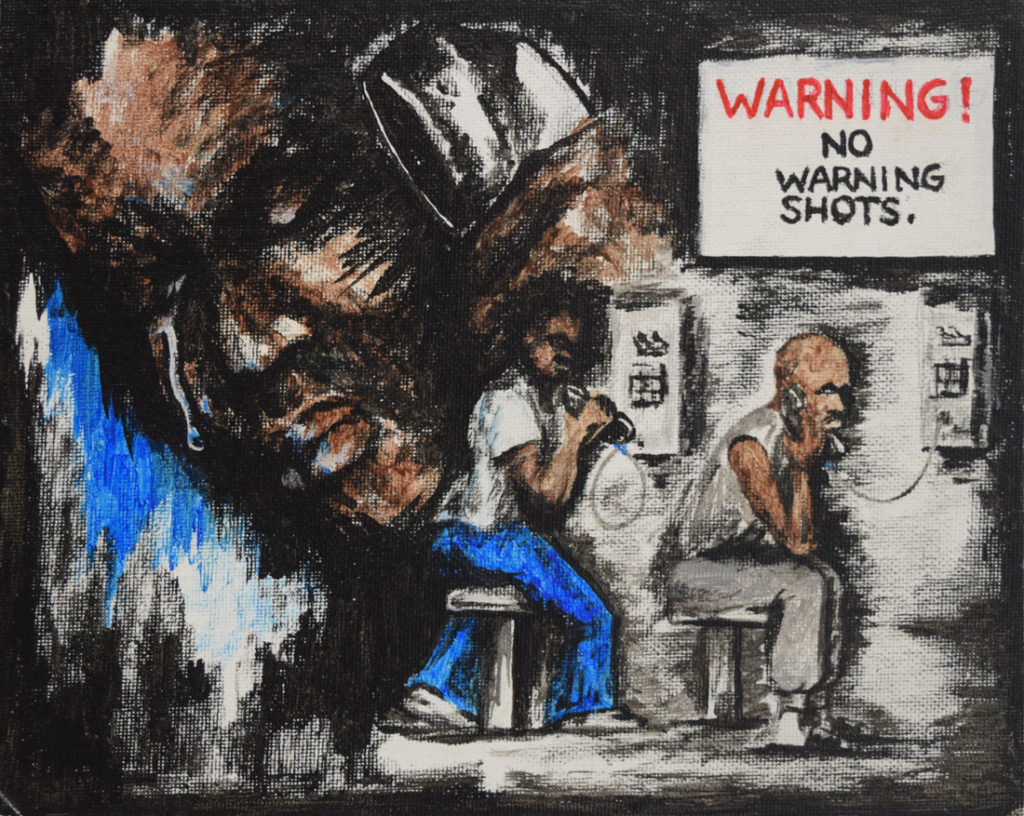
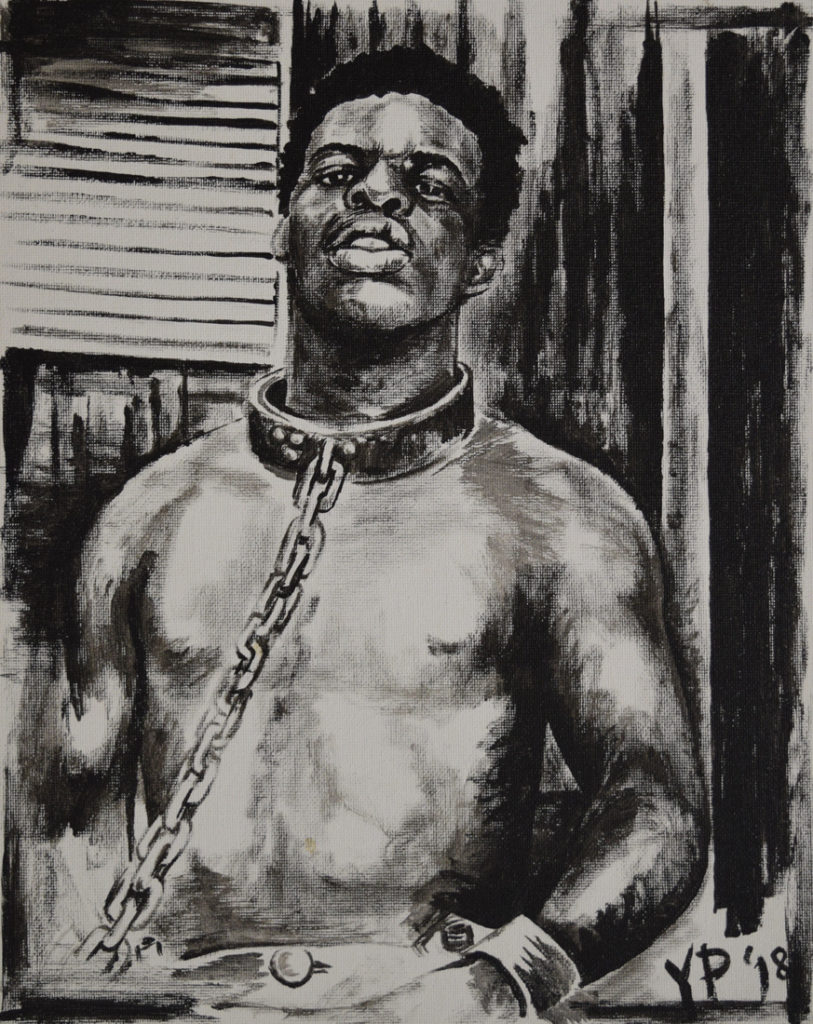
 WORLD IS WATCHING – MANIFESTO
WORLD IS WATCHING – MANIFESTO